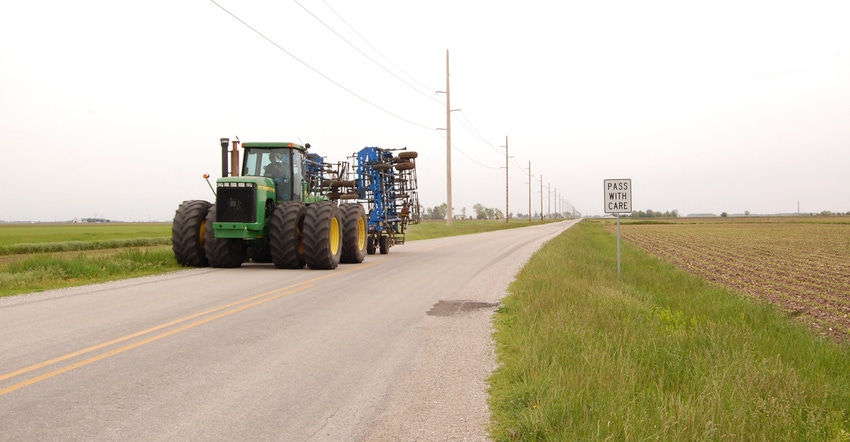
Spring is officially here, and the urge to get seed in the ground has kicked in. Before planters hit the first fields, Amy Rademaker, Carle Center for Rural Health and Farm Safety, encourages farmers to start the season off right by putting safety first.
Here are Rademaker’s 12 tips for a safe and successful spring:
1. Buckle up. Tractor-related injuries, primarily rollovers, account for 40% of farm-related fatalities, according to the University of Illinois Extension. “How many farmers wear a seat belt in the truck but not in the tractor?” Rademaker points out. “We know 99% of all tractor fatalities could be prevented if the rollover structure is in place and they wear a seat belt.” She adds that farmers may walk away a little battered and bruised, but they’ll walk away.
2. Resist the temptation for riders. Rademaker gets it: Many farmers enjoy making memories with friends and family members with planting and harvest season ride-alongs. “Statistically, we know it’s a dangerous place to be,” she cautions. A youngster riding shotgun in the buddy seat may cause distraction issues, and tractor cabs are not indestructible. “You can’t rely on the cab as a safety net,” Rademaker explains. A 5-year-old Kansas girl lost her life after falling through a shattered combine windshield.
3. Explain where the “Back 80” is. You may know how to get to the “Back 80” with your eyes closed, but make sure everyone else does, too. Keep directions and names to all farm ground at home, at the shop, with the planter and in commonly used tractorsso people know exactly where to send help if needed. Rademaker adds that after suffering a severe injury, you yourself may need directions on how to get back home or to the nearest hospital.
4. Use safety lighting, markings and escort vehicles. Is your slow-moving vehicle sign dull? Replace it. Are your caution lights working? Double-check them. Is there less than 1,000 feet of visibility? If so, Rademaker says an escort vehicle must lead and follow equipment traveling on roadways. Vehicles traveling 50 to 60 miles per hour need at least 1,000 feet to stop, she explains.
5. Lock it down. All machinery or equipment moving parts, including hydraulics, should be locked securely in place before traveling or transporting on roadways.
6. Don’t rely on hydraulics. Secure bars or parts that rely on hydraulics with another support system during maintenance. “It’s better to have two safety measures in place than just one,” Rademaker says.
7. Make time for a tuneup. Are all systems really go? Rademaker recommends proper maintenance on all equipment. Be sure to turn off machinery before performing maintenance work, and return guards and protective components after work is completed.
8. Educate hired help. Whether you're working with 10-year team members or summer help, Rademaker encourages farmers to review equipment safety features and expectations with all employees. Identify holes and stumps to employees in charge of mowing ditches and edges of fields.
9. Protect yourself and others. Ensure all team members wear appropriate protective equipment, including gloves, safety glasses and hearing protection, depending on the task.
10. Practice good roadway etiquette. “It’s great to be a good neighbor and pull over to let cars pass you, but never wave them around,” Rademaker cautions. “Let them make the decision on when it’s safe to pass.” That takes the responsibility off the machinery operator and puts it back on the vehicle driver.
11. Stay alert and get some sleep. Easier said than done when Mother Nature leaves a small window to plant hundreds of acres, but Rademaker recommends six to seven hours of sleep to avoid exhaustion. Sleep deprivation slows down response time, and that’s when things can go wrong, she explains. Don’t forget to hydrate and take regular breaks. “With GPS and autosteer, it’s easier to become complacent and tired,” Rademaker says.
12. Pack a safety kit. From Band-Aids to small towels for lacerations or cuts, keep a well-stocked safety kit in the truck, tractor cab and shop, Rademaker recommends.
About the Author(s)
You May Also Like




